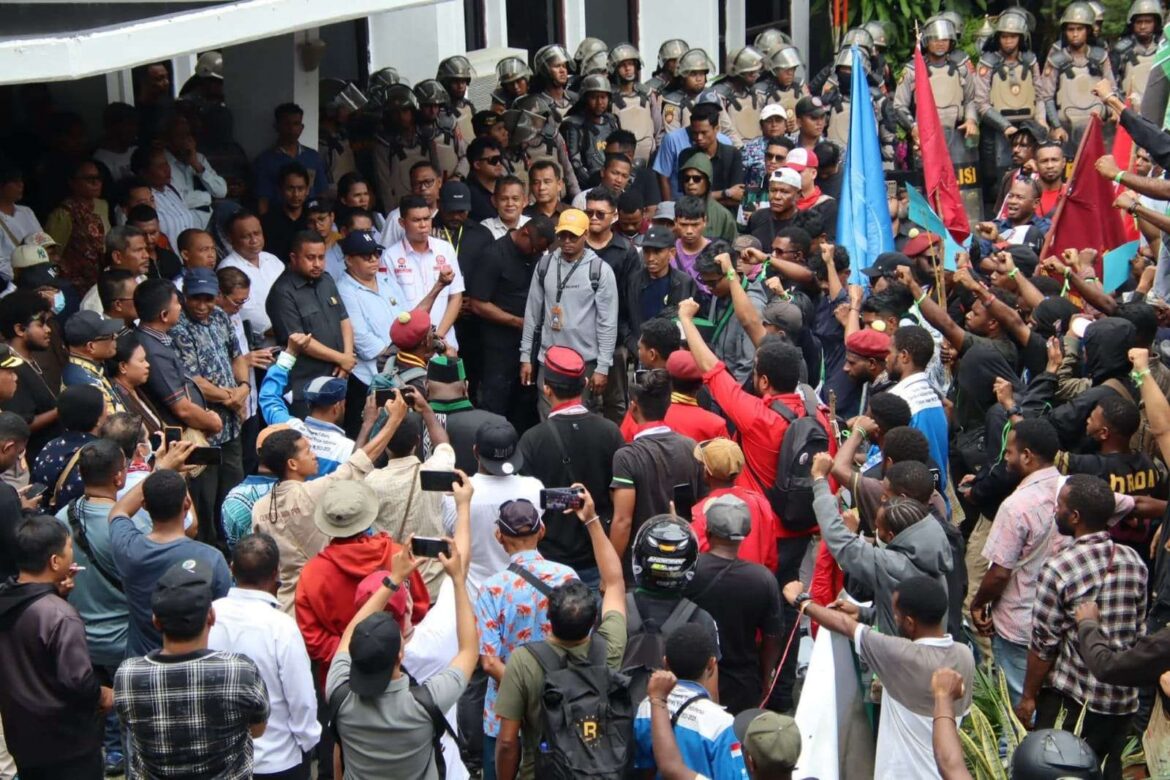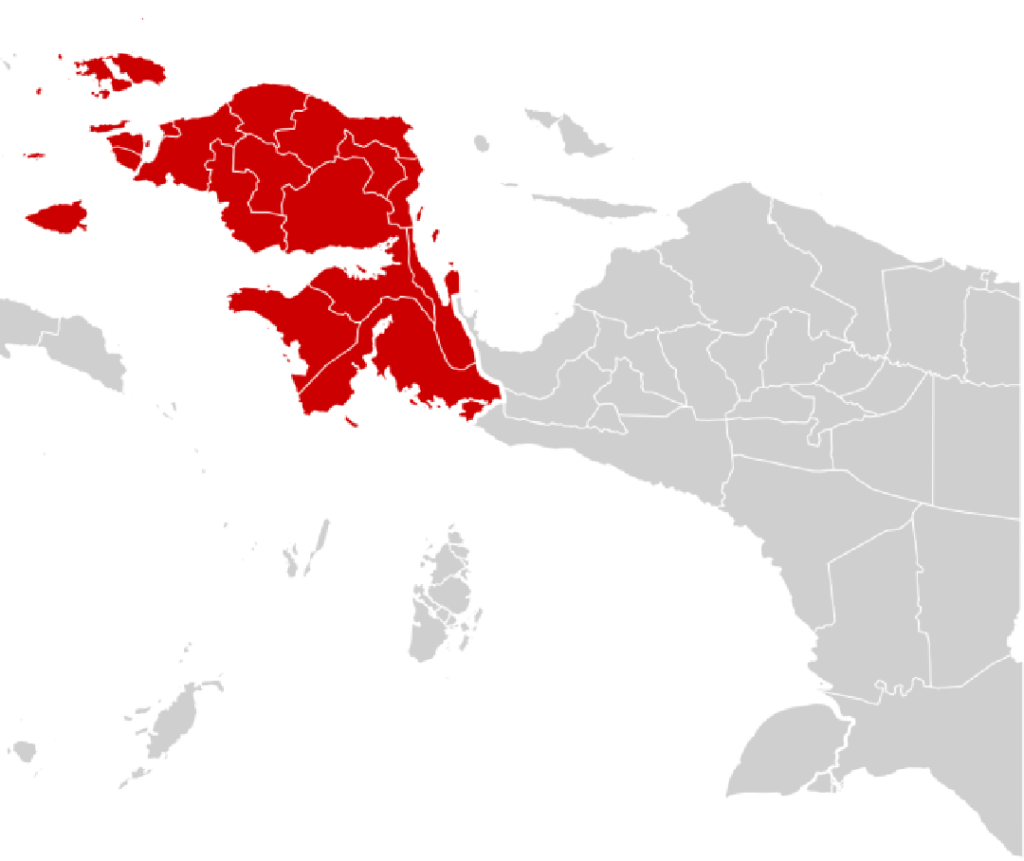In a powerful yet peaceful demonstration that defied the often tense narratives of civil protest in Indonesia’s easternmost provinces, hundreds of students from the Cipayung Plus alliance in Jayapura took to the streets on Monday, September 1, 2025. Their mission was clear: to amplify the voice of the Papuan people, to call attention to issues of injustice, and to demand responsive, transparent governance.
But it was not just what they demanded that caught the nation’s attention—it was how they demanded it.
Unlike many demonstrations that end in chaos and anarchy, the protest led by this coalition of student organizations unfolded with dignity, order, and dialogue. The streets were calm. The atmosphere was charged with conviction, not conflict. The demonstration, held in front of the DPR Papua (Papua Regional House of Representatives) and later Polda Papua (Papua Police Headquarters), became a model of peaceful activism rooted in local wisdom and national constitutional rights.
The Morning of Movement: Gathering for a Purpose
Under the heat of the Papuan sun, students from various campuses began gathering early in the day. Carrying banners, handwritten posters, and firm voices, they convened under the banner of Cipayung Plus Jayapura—an umbrella alliance that includes major youth organizations such as HMI (Himpunan Mahasiswa Islam), PMKRI (Perhimpunan Mahasiswa Katolik Republik Indonesia), GMKI (Gerakan Mahasiswa Kristen Indonesia), and GMNI (Gerakan Mahasiswa Nasional Indonesia).
Their unity was not built on ideology but on a shared concern: the growing list of unresolved national issues affecting Papua—ranging from environmental degradation and human rights violations to political representation and economic justice.
“We are not here to create chaos,” said Rison Zul Akbar, coordinator of the action and a representative from HMI. “We are here to speak on behalf of those who are rarely heard—farmers, Indigenous communities, and victims of violence. This is a democratic voice, not a riot.”
A Peaceful Protest—Rare and Powerful
As the demonstrators approached the front gate of DPR Papua, a surprising and heartening scene unfolded. Instead of deploying water cannons or raising barricades, the security personnel coordinated calmly with the protest leaders. Student marshals wearing bright vests ensured that the flow of traffic was minimally disrupted. Protesters took turns speaking into a megaphone, laying out the 11 formal demands that had been consolidated after weeks of internal deliberations.
The peaceful tone did not go unnoticed.
Denny Hennry Bonay, Chair of DPR Papua, personally came out to meet the students. In a rare act of political humility, he stood before them and listened—truly listened. After accepting their written statement, he spoke with clarity and respect: “What you have done today represents the highest form of civic responsibility. You came peacefully. You spoke with facts. You offered solutions. This is how democracy should work.”
His office later confirmed that a special legislative team would be formed to review the demands and follow up with appropriate institutions, both at the provincial and national levels.
The 11 Demands: A Voice for the Voiceless
The protesters’ demands read like a roadmap toward justice. They touched on critical topics that have long burdened the people of Papua:
- Mourning for victims of violence—especially those whose deaths have gone uninvestigated.
- Condemnation of state repression—urging transparency in law enforcement and accountability for abuses.
- An end to militarization—particularly in civilian zones where security operations often displace communities.
- Rejection of corruption—including criticism of pay raises for politicians amid economic hardship.
- Support for key legislative reforms—including the Indigenous Peoples Bill and Asset Recovery Bill.
- Protection of natural resources—opposing exploitative mining projects like those in Wabu Block and South Papua.
- Free speech and political participation—defending students and activists from criminalization.
- Release of detained peaceful protesters—across Papua and beyond.
- Community-based policing—favoring cultural sensitivity over military-style enforcement.
- Engagement of traditional and religious leaders—to guide national dialogue.
- A call to national unity and fairness—grounded in the values of justice, equity, and dialogue.
Each point, the students stressed, was not just a grievance—it was an invitation to build a better Papua together.
From the Legislature to Law Enforcement: A Day of Dialogue
After concluding the protest at the DPR Papua complex, the student group made their way to Polda Papua. There, they were welcomed not with suspicion but with open ears. Brigadier General Faizal Ramadhani, a high-ranking police official, met the students and accepted their demands personally. He expressed his appreciation for the demonstrators’ discipline and reiterated the police’s readiness to maintain peace in Papua with transparency and fairness.
“This was not only a protest—it was a message,” said Brigjen Faizal. “We hear the concerns, and we recognize the importance of maintaining dialogue with the public, especially the youth.”
Traditional and Community Leaders Applaud the Conduct
Among the many voices that weighed in on the student action was the Dewan Adat Saireri, a council of Indigenous leaders. Willem Saman Bonay, head of the council, emphasized the importance of preserving the culture of peaceful communication in every public expression.
“What these students did was not only constitutional—it was cultural,” he said. “They showed that you can carry the spirit of Papuan resistance without throwing a single stone. This is a form of leadership that comes from the land, not just the classroom.”
A Model for Future Movements
The success of this protest—measured not only in the clarity of its message but also in the dignity of its method—has raised hopes that it might inspire other civil society groups across Indonesia.
Political observer Hendrikus Sondegau called it a “landmark moment” in Papuan political culture. “This shows a shift from reactive to proactive activism,” he noted. “Cipayung Plus Jayapura has laid down a framework for how young people can shape national dialogue without breaking laws or burning tires.”
Looking Ahead: From Protest to Policy
For the students of Cipayung Plus, the protest was just the beginning. In follow-up interviews, leaders from PMKRI and GMKI emphasized that they would be tracking the legislative process closely, engaging in dialogue with DPR Papua, and educating their fellow students about the civic process.
“This isn’t just about one day in September,” said Fransiskus Boma, a GMKI representative. “This is about keeping the flame alive. We want Papuan youth to believe that change is possible—and that it starts with participation, not violence.”
Conclusion
What happened in Jayapura on that September morning was more than a protest. It was a demonstration of hope—of how courage, when paired with discipline and dialogue, can move mountains. In a province often overshadowed by conflict and neglect, this student-led action brought a new narrative to light: one of peaceful power, cultural integrity, and democratic faith.
As the streets of Jayapura emptied and the banners came down, one thing remained firmly planted in the public’s memory: Papua’s youth are not waiting for change—they are leading it.


